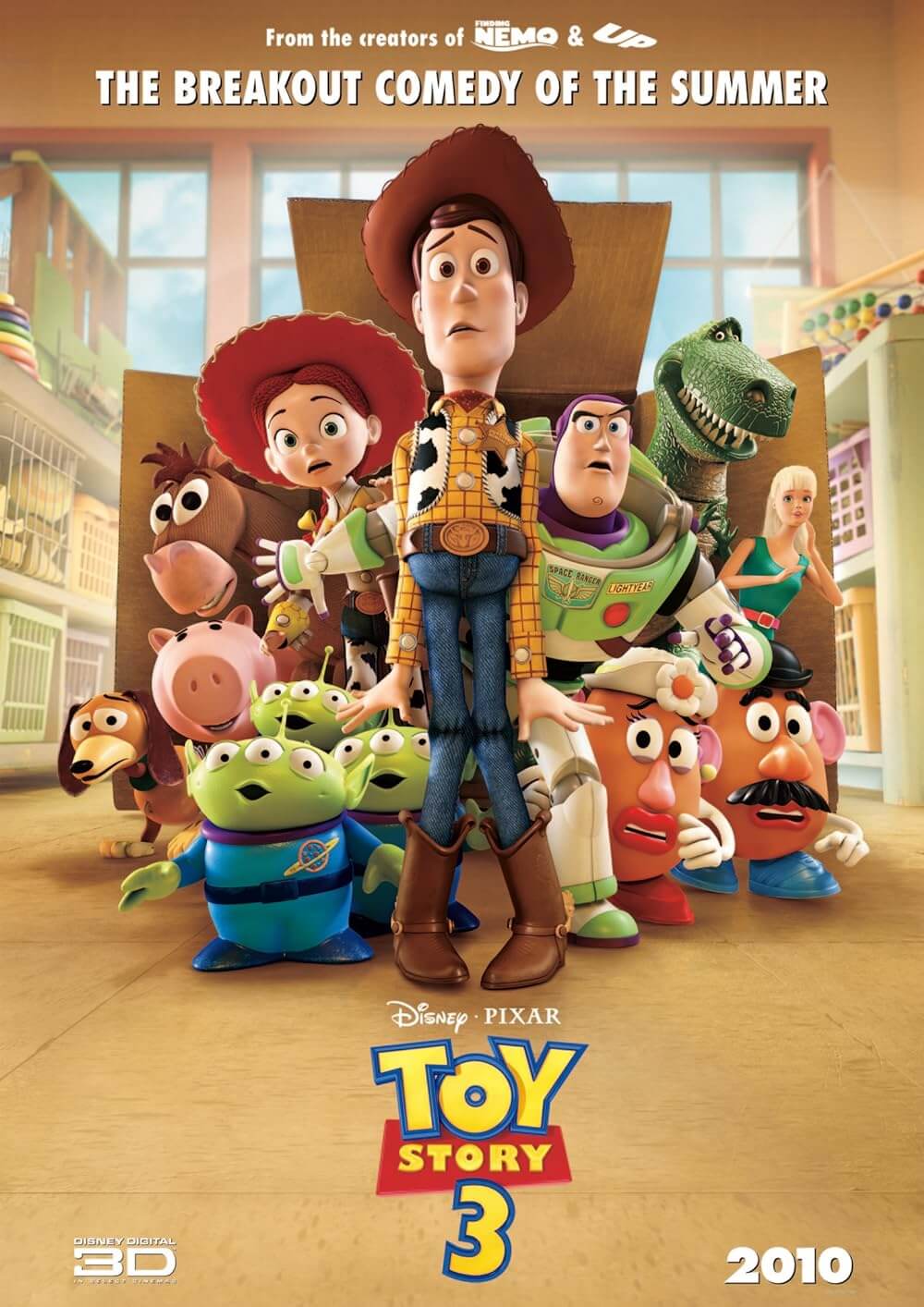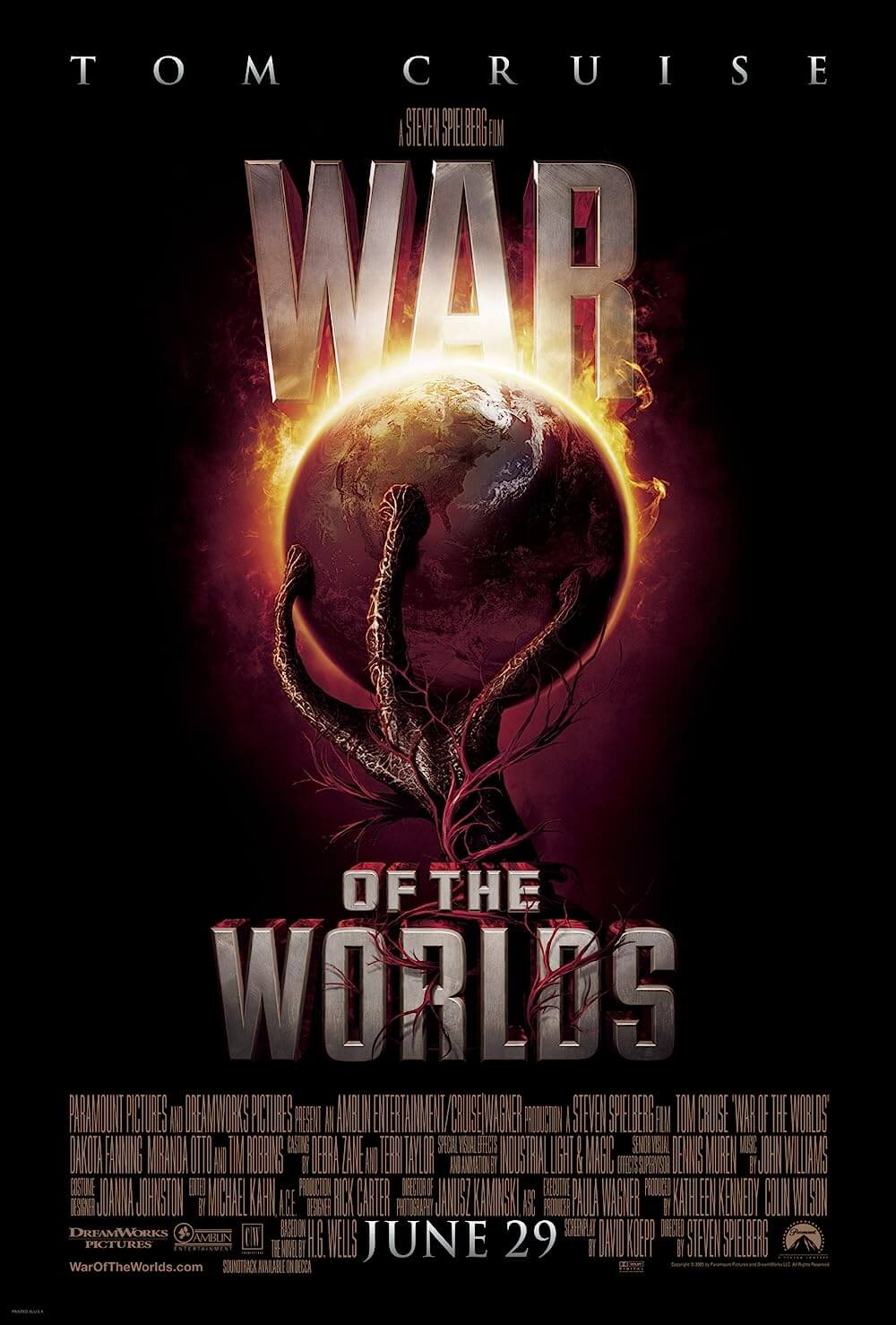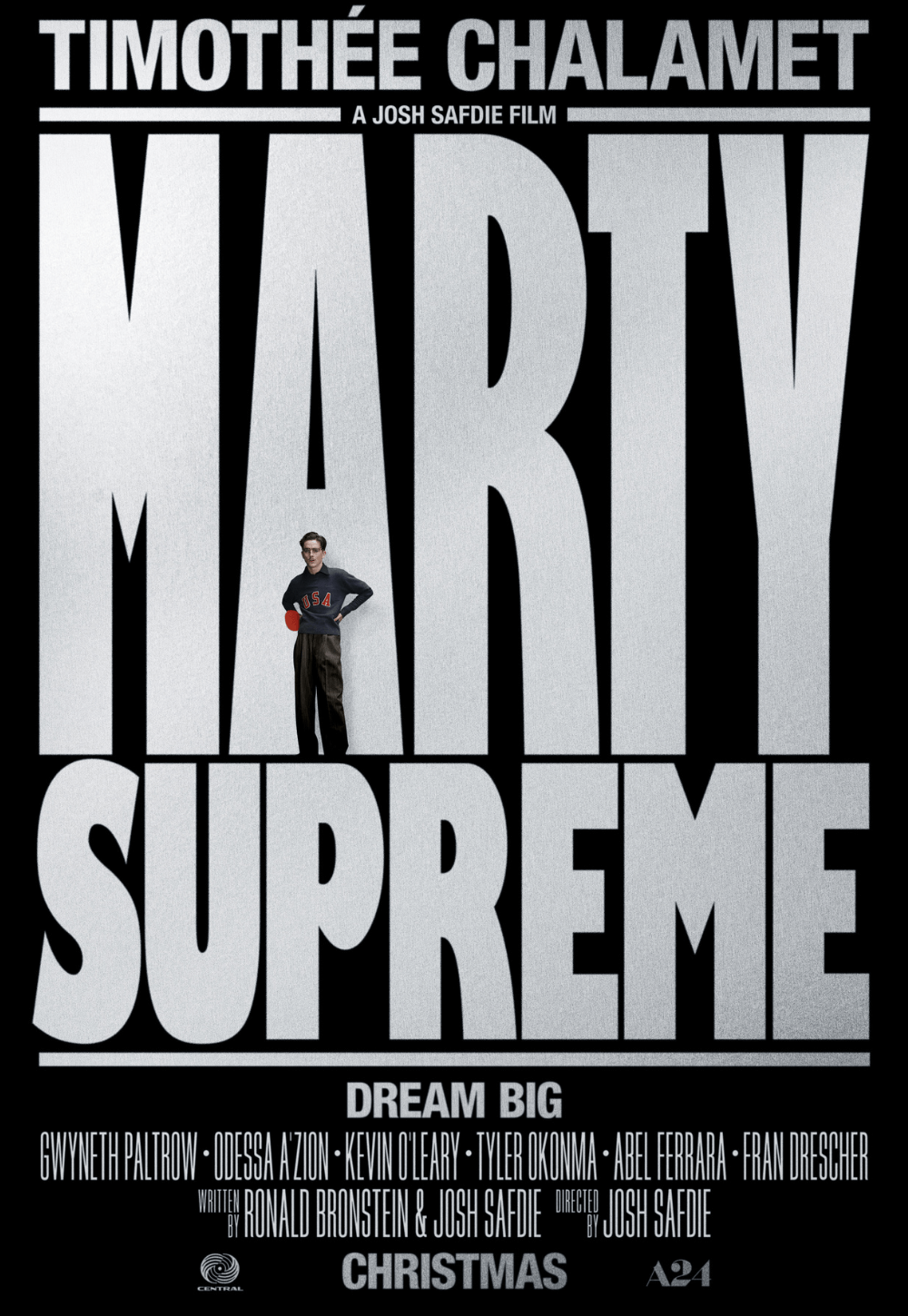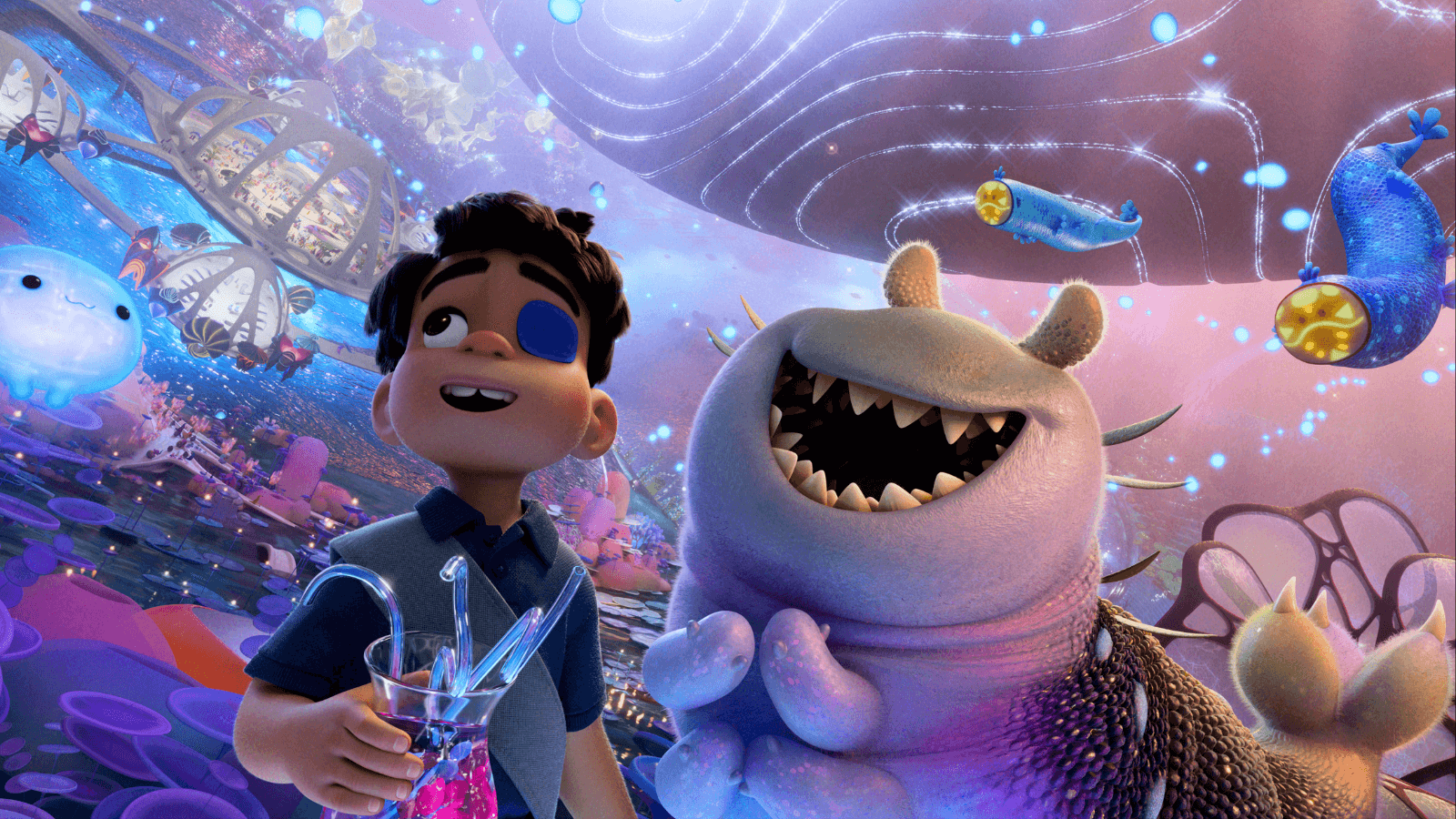
Elio
By Brian Eggert |
Are we alone in the universe? Sometimes, that question seems too far-reaching when we still face rampant loneliness and yearn for connection on planet Earth. Pixar’s latest animated wonder, Elio, finds its 11-year-old hero, an orphan named Elio Solís, searching infinity and beyond for some place to feel accepted, only to uncover a vast community of friendly alien species from around the galaxy. However, he also finds that people who love him and share his interests might be closer than he thinks. Here’s a work of science fiction—not unlike Pixar’s WALL·E (2008) or Lightyear (2022)—presented with the genre’s potential for boundless imagination and visual luminosity, testing the limits of even Pixar’s team of animators and visionaries. Rooted in a moving narrative and a full-hearted embrace of sci-fi tropes, it compares to their best work by tapping into a moving emotional core and presenting those sentiments using rather awe-inspiring cinematic language. With universal translators on, Elio reaches for common ground in a world (and galaxy) far too focused on what makes us different.
Helmed by three credited directors—Domee Shi (Turning Red, 2022), Madeline Sharafian (the short film Burrow, 2020), and Adrian Molina (Coco, 2017)—Elio was also penned by three screenwriters: Julia Cho, Mike Jones, and Mark Hammer. On a different production, this too-many-cooks situation might be a warning sign of disorganization. However, one aspect that makes Pixar extraordinary compared to other animation houses resides in their collaborative process—a seemingly counterintuitive environment where multiple creatives have input on the story, design, and execution. Rather than producing a film with no point of view, which is usually how filmmaking by committee goes, Pixar’s process hones the story’s themes and enriches the visual presentation. As a result, few details in Elio feel unconsidered or like an afterthought. Even with a limited 99-minute runtime, the film gives its characters, themes, aesthetics, and world-building equal attention.
Voiced by Yonas Kibreab, Elio recently lost his parents and now lives on a military base with his aunt, Olga (Zoe Saldaña), whose job entails monitoring the space debris orbiting the planet. She dreams of becoming an astronaut, but Elio’s sudden presence in her life has derailed those plans—not that she resents him; she loves him, eccentricities and all. Even so, Elio cannot help but feel unwanted, yet desperate to belong and make a friend. After learning about the Voyager probes—launched in 1977 in hopes of finding other life in the universe—he wishes aliens would abduct him and take him somewhere far, far away. So, he builds a makeshift antenna out of spare parts and ham radios. And when aliens inevitably make contact with a familiar message (“Bring us your leader… please”), Elio responds. Before long, a spacecraft transports him to the Communiverse—a collective of peace-loving alien species, not unlike Star Trek’s United Federation of Planets—and he presents himself as Earth’s leader.
The Communiverse station is one of Pixar‘s most inspired creations—a dizzying array of squishy aliens, translucent technologies, and neat sci-fi concepts rendered in candy-store colors and fluid, welcoming shapes. Every detail pops and presents something new to discover, with the screen so jam-packed full of visual stimuli that rewatching Elio becomes necessary. Elio represents Earth’s candidacy into the Communiverse, where its members share knowledge and technology freely. This harmonious space haven stands in stark contrast to another Communiverse candidate from the planet Hylurg, a warlike species reminiscent of a silkworm and a tardigrade, save for their mechanized bodysuits and spaceships of brutalist black metal and molten lava. When the Hylurgs’ aggressive behaviors preclude them from joining the collective, their leader, Lord Grigon (Brad Garrett), resolves to conquer it. Elio, pretending to be a great leader, agrees to negotiate with Grigon in exchange for becoming Earth’s ambassador to the Communiverse. He finds an ally in Grigon’s sweet-hearted son, Glordon (Remy Edgerly).
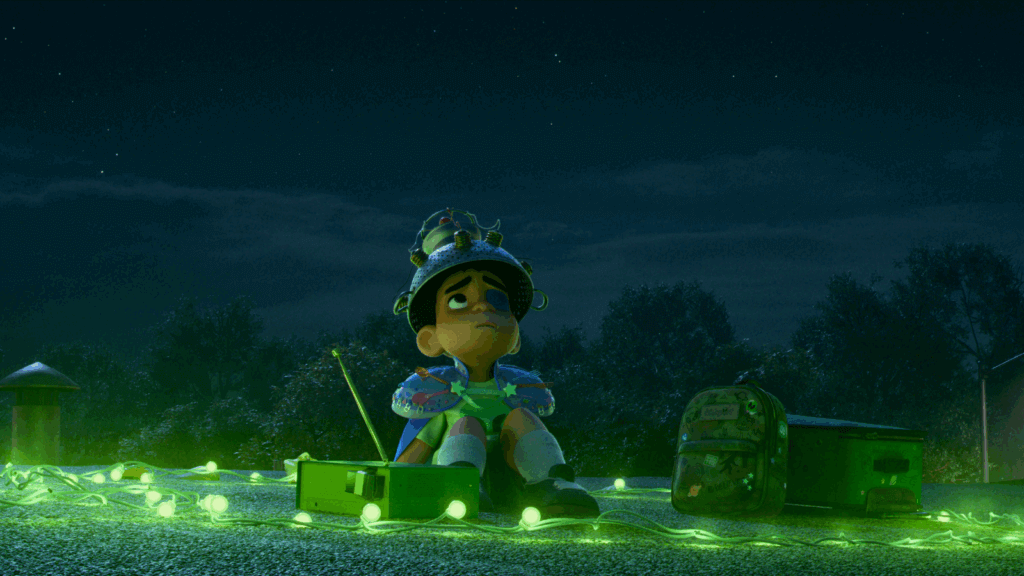
If Elio embraces the well-worn animated character archetypes of feeling misunderstood and running away, it’s not without ample emotional weight. Most Pixar features tend to access the full spectrum of emotions, and I alternated between laughter, compassion, and tears. The humor sometimes relies on visual contrasts, such as Glordon’s pudgy body, eyeless face, and serrated mouth of teeth, which looks intimidating but provides a shield from danger in one sequence. Glordon’s playful silliness is only matched by his friendship with Elio and fear of breaking from tradition and disappointing his father, prompting him to bawl out of his mouth instead of his eyes. Elsewhere, as ever with Pixar, the filmmakers deploy horror-adjacent imagery to chilling and comedic effect. A subplot about Elio’s clone, created by the Communiverse to avoid raising concerns about his absence on Earth, results in hilariously macabre and paranoid scenes with Olga reminiscent of Invasion of the Body Snatchers (1956, 1978), and the segment “Hair” from Body Bags (1993).
Of course, Pixar outclasses every other computer animation house in the visual department. The scenes inside the Communiverse are nothing short of dazzling. Most of the character and ship designs look incredible as well, except for the ambassadors who run the Communiverse. They are a diverse group of shapes and sizes who look innocent and, at times, prove a little obnoxious in their voice work and generic in their appearance, ranging from large anthropoids to rock-like beings. More inspired is the liquid computer, Ooooo (Shirley Henderson), and the all-knowing program that looks like a millipede constructed out of transparent, glowing rectangles that glide about like an underwater snake. After nearly 30 films, Pixar continues to blend cartoony characters with photoreal, even cinematic imagery inspired by live-action movies. A late shot of a sunset over a forest is quite simply breathtaking, and their use of slow-motion, as though they had captured the moment on celluloid, makes for an inspired animated flourish.
Bookended with an audio clip from Carl Sagan speaking about the importance of searching for other forms of life in the galaxy, and how that search is innately human, Elio is also a sci-fi nerd’s dream. Every Pixar feature teems with allusions to other movies, but this one’s genre references and narrative motifs borrow from a cross-section of classics and fringe titles: Alien (1979), 2001: A Space Odyssey (1968), Flight of the Navigator (1986), TV’s Alf (1986-1990), and countless others. The film takes place in a densely populated intergalactic community where there’s no hope of processing every alien species, a gleefully overstimulated quality that recalls the Wachowskis’ Jupiter Ascending (2015). But beneath the giddily applied homages and eye-popping details is a story that answers whether we’re alone in the universe. Even if we cannot make contact with aliens (yet), no one is alone. We may feel alone, but we need only search for our people and communicate with others to reach common ground. Suddenly, we’ll discover that loneliness is just a temporary state before finding the ones you love.
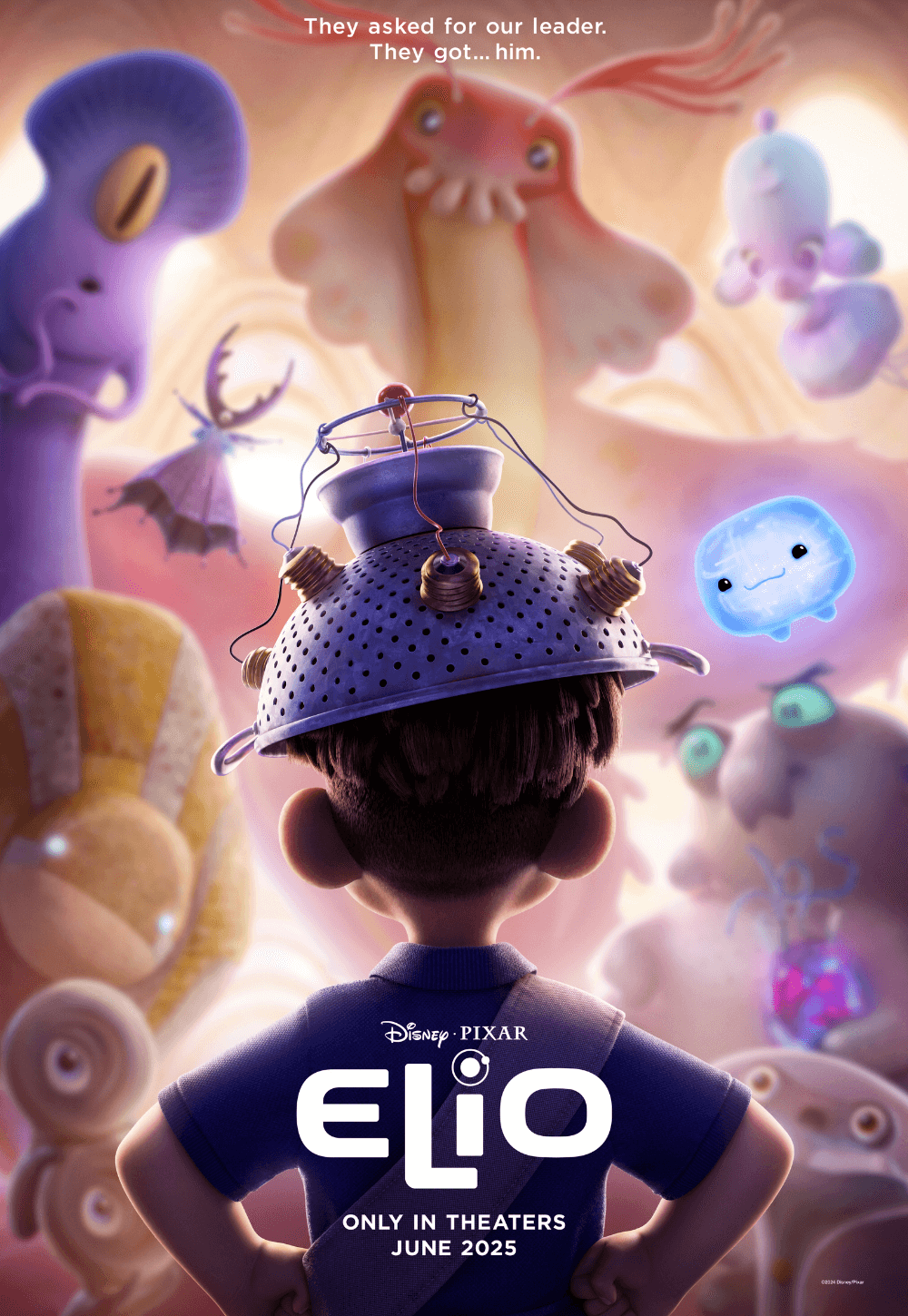
Thank You for Supporting Independent Film Criticism
If the work on DFR has added something meaningful to your love of movies, please consider supporting it.
Here are a few ways to show your support: make a one-time donation, join DFR’s Patreon for access to exclusive writing, or show your support in other ways.
Your contribution helps keep this site running independently. However you choose to support the site, please know that it’s appreciated.
Thank you for reading, and for making this work possible.
Brian Eggert | Critic, Founder
Deep Focus Review


